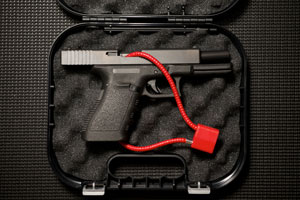

Unless you are one of the few individuals in California that has the privilege of possessing a California Conceal Carry Weapons (CCW) permit, your weapons must be transported in a certain way so that you aren’t found to be illegally carrying a concealed weapon.
For concealable weapons like pistols and revolvers, first, the weapon must be unloaded. Second, the weapon must be stored in a locked container. The locked container must be completely enclosed and locked by a padlock, key lock, combination lock, or something similar. The trunk of a car satisfies the locked container requirement. However, the glove compartment does not.

For non-concealable weapons like shotguns and rifles, the weapons do not need to be in a locked box but must be unloaded when being transported. There are no guidelines on how ammunition must be transported other than they cannot be loaded into the firearm.
In a school zone, however, all weapons including those that cannot be concealed must be in a locked container or on a locking gun rack. When traveling across state lines, it is important to know if the state to which you are traveling allows the particular weapon you possess. If the state allows your particular firearm, it must be transported unloaded in a locked box or on a locking gun rack. When flying, the weapon must be declared upon check-in and may be examined upon request. During the flight, ammunition must be transported in a separate container in the locked box and also declared during check-in.
It is important to follow these rules because violation of the law can end in an unlawful possession charge with confinement in county jail or state prison not exceeding one year and/or a fine under California Penal Code section 25400, which may prevent you from ever possessing a firearm again. These rules are not in place to restrict you from using your weapon, but to protect the innocent people around you when you are in possession of your weapon. Please travel responsibly!
Find more legal articles in our articles database.